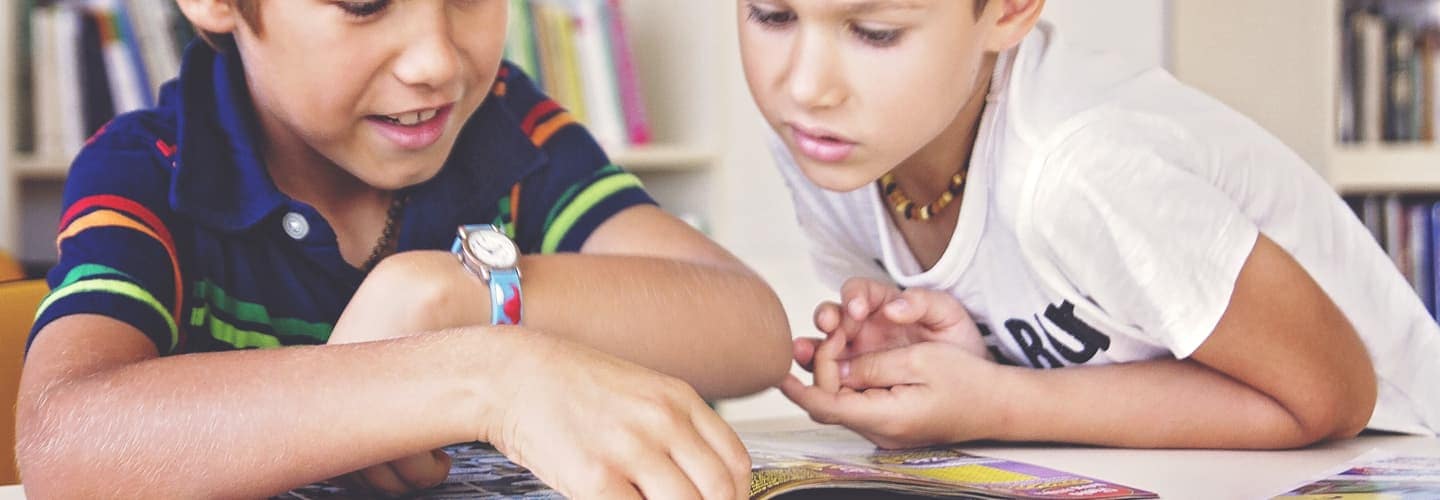Reading in English can be one of the most challenging activities for young learners and teenagers, especially when they don’t get much enjoyment from reading in their own language.
These four reading strategies are fun, high-energy, and educational ways of getting even the most reluctant students involved in your reading lessons.
1. Bring outside interests into the classroom
Many students find it hard to get enthused by the reading texts used in their classrooms; they might feature complex vocabulary, be too generic, or just not resonate with their interests. An effective way of reaching out to the more reluctant readers in the class is to use reading materials related to the media they enjoy engaging with in their leisure time.
Pearson’s Marvel series of graded readers provides an ideal opportunity for bringing popular movie culture into your learners’ reading skills development. All of the readers are designed specifically for use in the classroom and feature an integrated skills approach that reinforces vocabulary and helps develop language skills. The readers come with activities to complete throughout the book rather than at the end, and key vocabulary is highlighted and defined.
Excitingly, most of our readers come with downloadable audio files (MP3s), so the students can listen along and hear the stories come to life. The audio can help students model pronunciation, get used to different accents and dialects, and make it even more accessible for students who are still less keen on reading.
2. Gamify the reading experience
By adding simple game dynamics and mechanics to your reading activities, you can add a competitive and fun element to your classes. This could help maintain the interest of learners who might otherwise lose enthusiasm.
The “dictogloss” activity is a good way of adding that extra element as it uses a countdown timer and peer-to-peer interaction to make the reading more of a competitive game.
First, find a good level and age-appropriate story for your students. Before you begin reading the story, tell your students to pay close attention because they are going to re-tell it themselves later.
You will need to read the story to the students in an engaging way, occasionally stopping, and asking students what they think will happen next.
Afterwards, allow the students five minutes to write as much of the story as they can remember in their notebooks.
When time is up, put the students in pairs and allow them to compare stories and correct each other, combining their stories, so they have a complete version. Help students by writing key vocabulary on the board as they request it.
Finally, hand out the original story for students to compare. Get feedback to find out what new vocabulary they have learned and help them make corrections in their stories where needed.
3. Experiment with high-energy activities
Reading doesn’t have to be a sedentary activity. Make use of the classroom space and use movement as a way to motivate and engage your students.
Add a dash of physical activity to your reading task by turning it into a running dictation competition. At the same time, they will practice a whole range of skills; reading, listening, pronunciation, and writing.
Before the class, stick some level-appropriate reading materials to a classroom wall; ideally, you should space it out well and have one reading sheet for every two to four students (the material should be identical).
Put your students into pairs and tell them they are going to have a reading race. Nominate one student to write and another student to dictate.
Students who are writing must sit at a table on the opposite side of the room to the reading material. Students who are dictating must go to the text on the wall, memorize as much of the text as possible, come back to the writer and dictate what they can remember.
Pairs must write as much as they can in four minutes, and when you get halfway through the activity, students should swap roles.
Finally, ask the students to swap their papers and listen to your dictation, making corrections and asking questions as they go. The pair with the longest text and fewest errors is the winner!
4. Go beyond the text
Taking a text and making it into something entirely original can also be a powerful motivator for creative students. Those who complain that reading is boring or too hard will have an extra reason to get through a story if there’s a promise of creative fun at the end of the task.
Tell students that once they have finished reading, they must re-imagine the story and characters and adapt it for a radio show, complete with sound effects, music and scripts.
Depending on how creative your students are feeling, they could write a sequel or a prequel, or adapt the existing story – ideal if you’re using a superhero reader from the Marvel series.
They will need to review vocabulary and pronunciation, remember the details of the original story, explain the characters and their motivations, and plot and write their own scripts. Students can find sound effects on YouTube and record the whole thing on their mobile phones, or a school computer.
By turning a book into a creative project, not only can you motivate students to read, but you will reinforce vocabulary, pronunciation and have a lot of fun doing it.



